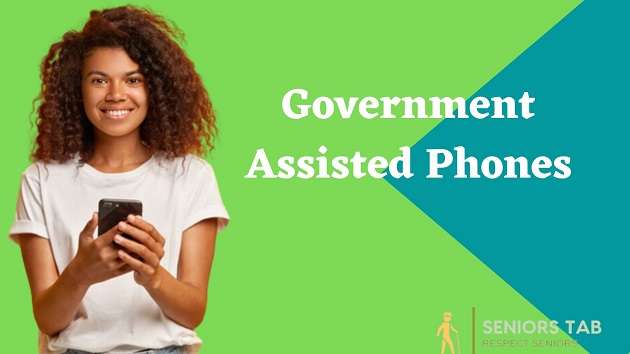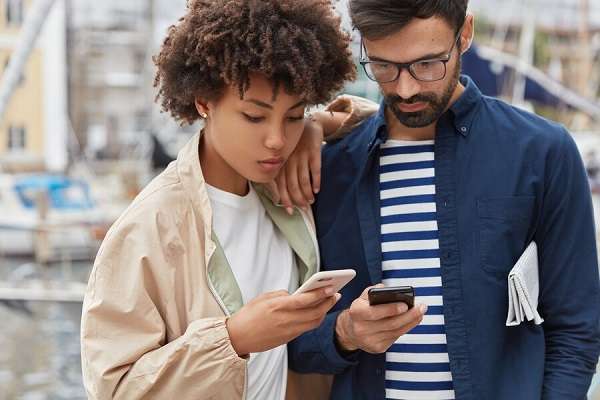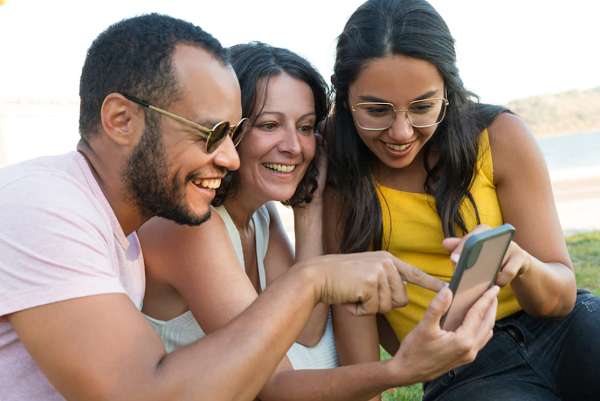Government assisted phones are devices that the government offers to needy people. The initiative is organized to assist low-income families and people who can’t afford basic phone service. It’s a great way to get a smartphone if you qualify for one. If you don’t comprehend what I’m talking about, then continue reading!
The government pays the phone costs, it allows people to access communication without spending money on a phone. Some of the most prominent government-assisted phone giveaway programs in the USA are – Lifeline, TANF, EBB, etc.
Moreover, you can also get free phones with medical coverage from government subsidies like Medicaid, and Medicare. In the following content, I’ll discuss the basics of government assisted phones.
Furthermore, I’ll talk about the qualification criteria, requirements, and application procedures to help you get a free government phone. So stay tuned!
What Are Government Assisted Phones – The Basics
The government, in an effort to provide cell phone service to those families in the United States with a lower income, has implemented a program known as the Government-Assisted Phones initiative. Launched back in 1996 by the Federal Communications Commission (FCC), this program is funded through the Universal Service Fund (USF), which collects contributions from various telecommunications companies.

The initiative has since become a lifeline for many impoverished households across the country, providing them with the means to stay connected with loved ones and access essential services.
With the assistance of this program, these families are now able to enjoy the same benefits and privileges as their more affluent counterparts, thus narrowing the digital divide that has long plagued our society.
The Universal Service Fund (USF) is essentially a fee that is levied on consumers for the provision of telephone services, which in turn is used to fund a variety of programs aimed at promoting access to affordable telecommunications services across the United States. One such program that has been particularly successful in achieving this goal is the Government-Assisted Phones initiative, which seeks to provide essential telecommunications services to those who may not have the means to access them through other channels.
Typically, these people live in rural areas or have limited income and resources. They may be elderly or disabled or have children who are unable to afford their cell phone plans. For someone to qualify for government assistance cell phone with their cellular service, they must meet certain criteria set by the FCC:
- Their age needs to be a minimum of 18 years;
- They must live in an area where there are no other providers offering coverage; 3)
- Their household income must fall within certain limits set by state law.
- Their household must not be served by another subsidized telecommunications program such as Lifeline.
Government assisted phones are free or low-cost smartphones that are available to people who qualify for government assistance. The best part is, they’re a great way to get a smartphone! Government assisted smartphones are phones that are provided at low or no cost to eligible households.
Government assisted phones can be used anywhere in Canada and the USA—and numerous countries across the globe. They’re especially helpful if you’re looking for something small and easy to use, but want something more than just an old flip phone (which may still be available).
How Do Government Assisted Phone Programs Work?
When it comes to accessing government-assisted phones, the Lifeline program is one of the most prominent and widely utilized initiatives in the United States today. Operating under the auspices of the Federal Communications Commission (FCC), this program is designed to provide crucial savings on phone and broadband services to those who may be struggling to make ends meet.
To qualify for this program, individuals must meet specific income standards, which are set based on household income and standard of living. Once these criteria are met, individuals can then access the program and begin to enjoy the benefits of affordable, reliable telecommunications services.
Only one internet or phone service is permitted per family, and family income must be below 135% of the poverty threshold limit. The monthly savings for phone service is typically 9.25 dollars.
After applying, consumers must be approved before selecting and enrolling with a phone or internet provider that provides the benefit. On Lifeline-supported devices, businesses must adhere to particular standards, including the range of usage minutes permitted for specific mobile and residential Broadband speeds, and the availability of a hotspot-enabled device.
The Universal Service Administrative Company (USAC), which also oversees several other public grants, covering maintenance, data gathering, and reimbursements for lower-income schemes, is responsible for managing the Lifeline program on a governmental level.
How To Qualify For A Government Assisted Phone

Firstly, if you are now enrolled in a government assistance program, you may be eligible for a free government phone. To get free government smartphones, you have to meet these subsequent prerequisites:
You must be an American citizen or permanent resident in good standing. Your household earnings need to be at or under 135% of the national deprivation level.
The FPL varies by state, but in general, it’s $20,400 for one person and $30,750 for a family of four.
Your state will require you to provide proof that you meet these criteria before they’ll issue your subsidized phone plan.
You should also inspect with your regional department of corrections or county welfare office to find out what documentation is required for eligibility.
You have to sign up for one of the following programs: Medicaid, Supplemental Nutrition Assistance Program (SNAP), or Temporary Assistance for Needy Families (TANF).
Your household can’t have more than 2,000 dollars in assets and no more than 3,000 dollars in annual income.
If you want a free welfare phone, for instance, and you are the only person who lives in your house, you’ll need to demonstrate that your yearly salary is less than $12,760. Each extra person raises your limit by an additional $4,480, making it easier for you to qualify for a government-subsidized cell phone as well as a low-cost cellular phone plan as your family grows.
If you qualify, government assisted phone plans are a great way to get a smartphone. Government assisted phones are available in many countries, and they’re a great option for those that qualify. You need to be at least 18 years old and live in Ireland or Northern Ireland (NI).
You also have to be able to prove income levels that meet certain criteria needed before the phone can be purchased. These requirements vary depending on where you live; however, most places require proof of employment or financial stability before offering these devices.
How Can I Apply For Free Government Phones?
The acquisition of a complimentary government phone necessitates the presentation of a pay stub, a W-2 form, or a certification from the agency of government with which one is registered, as proof of familial income. Fortunately, the registration process for this type of phone service is relatively straightforward.
To enroll in this program, one can easily navigate to the website of a participating cell phone corporation. For example, Assurance Wireless’ website exhibits an obtrusive “Apply Now” button that is fairly prominent.
All one must do is meander to the company’s website and follow the process that is predicated on a series of steps. This way, it is possible to discover if one is qualified to receive a smartphone and cellular plan under their cellular service.
Top 5 Free Government Assisted Phone Providers

Now that you are familiar with the basics of the free government assisted phone plans, it is time to examine the details of individual plans and the providers. Here, I’ll take a quick glimpse at the 5 best providers of free government cell phones.
1. StandUp Wireless
StandUp Wireless has been granted authorization by the Federal Communication Commission and is legally available in 29 states. This carrier provides qualifying customers with the option to receive their services either for free or at a discounted price. Additionally, StandUp Wireless offers eligible Lifeline members access to free calls, texts, and 4.5 GB of data.
As part of the Lifeline program, StandUp Wireless may occasionally furnish complimentary phones to those who sign up for their services. However, if you do not currently possess a Lifeline-compatible device, StandUp Wireless offers a selection of phones that can be purchased at a reasonable cost after you have registered for an account and have been accepted into the program. It is important to note that there is no gift offer available.
2. SafeLink Wireless
SafeLink Wireless is a government-funded cell phone service that provides free cell phones and free minutes to eligible people in the US. SafeLink Wireless is a program of Lifeline Assistance, which means that you can get your phone and minutes through SafeLink without qualifying for other programs like food stamps.
They are one of the biggest cell phone service providers in the USA, serving over 1.5 million users. It is a government-financed initiative that provides free cell phones and services to qualified low-income families. They offer both prepaid and postpaid options, but for the former, you must have an existing landline to qualify.
3. Entouch Wireless
enTouch Wireless is a unique mobile phone service provider, offering both postpaid and prepaid plans across 25 states in the U.S. The company was established in 2004 and operates differently than traditional carriers.
While enTouch Wireless employs the networks of other carriers, they possess their own infrastructure and tower ownership. Their service plans comprise several options, including unlimited talk and text for $35 per month, as well as various other choices for both individuals and families.
4. Q Link Wireless
Q-Link Wireless is a cell phone service provider that offers unrestricted talk, text, and data plans. Its plan options include the Unlimited Family Plan for $50/month for two lines and the Unlimited Individual Plan for $40/month for one line.
Q-Link Wireless also offers a free trial of its service. It is an MVNO that offers wireless data plans. You can use their service with any unlocked phone or device that supports either 3G or 4G LTE connectivity.
5. Assurance Wireless
Assurance Wireless is a Lifeline-supported program that is designed to provide free cell phones and services to qualifying residents. This program is administered by Assurance Wireless, a company that is owned by TracFone.
Assurance Wireless offers two plans to its customers: one for talk only, and another for talk, text, and data. Both plans come with unlimited nationwide calls and texts. However, the data plan permits the use of up to 1 GB of data per month before it is terminated.
Conclusion
If you’re old enough to be on disability, and you want a smartphone, then getting government assisted phones is a great way to go. It’s not just about saving money; it’s about having access to technology that helps with your day-to-day life and staying connected with friends and family members.
